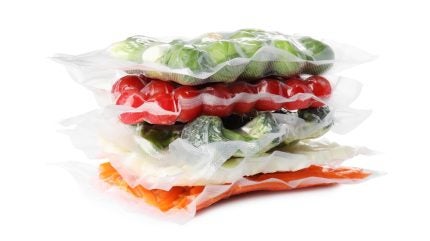
Vacuum packaging has emerged as a vital solution in food preservation, providing an effective way to enhance shelf life, protect food quality, and reduce waste.
By removing oxygen from the package, vacuum packing minimises the growth of bacteria and mould, which prolongs the freshness and safety of food products.
Here’s a detailed look at how vacuum packaging benefits the food industry and its potential to drive sustainability.
Extending shelf life and preserving quality
One of the key benefits of vacuum packaging is its ability to significantly extend the shelf life of perishable foods.
By sealing food in an oxygen-free environment, vacuum packing reduces spoilage, as bacteria and fungi that cause decomposition cannot thrive without oxygen.
This method is especially beneficial for products like meat, cheese, and prepared foods, which tend to spoil quickly when exposed to air.
Many food businesses, from supermarkets to catering services, rely on vacuum sealing to maintain inventory quality for longer, ultimately reducing the amount of food wasted due to spoilage and quality degradation.
This extended freshness also improves the sensory qualities of food, preserving its flavour, texture, and colour. For instance, vacuum-packed meat retains its natural colour, while other foods maintain their intended taste and texture.
This aspect is crucial in meeting consumer expectations for quality, especially in products such as gourmet cheese or deli meats, which need careful preservation to maintain their premium characteristics.
Boosting food safety and reducing contamination
Vacuum packaging enhances food safety by creating a controlled environment that limits contamination risks.
Without oxygen, vacuum-sealed packages prevent the growth of harmful pathogens, such as Salmonella and E. coli, which are responsible for many foodborne illnesses.
This benefit is particularly significant for products that require a cold chain, such as seafood, as the vacuum seal ensures safe storage by minimising microbial contamination.
This method also protects products from external contaminants, including moisture and foreign particles, by using durable, airtight materials.
The absence of oxygen further inhibits oxidation, which is responsible for off-flavours and the breakdown of food nutrients, especially in high-fat products like nuts and oils.
Through vacuum packaging, food remains in its optimum condition from processing to consumption, helping both producers and retailers maintain high standards of food safety.
Supporting sustainability and waste reduction
Vacuum packaging is also a more sustainable choice in food packaging.
Due to its ability to extend the shelf life of perishable products, this method reduces food waste—a critical advantage considering that an estimated one-third of all food produced globally is wasted.
By preserving products for longer, vacuum packaging allows suppliers to maintain a more efficient supply chain, as food doesn’t need to be discarded as frequently.
This longevity benefits businesses financially by reducing losses from spoilage, while also helping to lower the carbon footprint associated with food production and waste management.
In addition to reducing food waste, vacuum packaging often uses flexible, lightweight materials, resulting in less packaging waste overall.
This reduction in packaging materials also contributes to a decrease in transportation energy, as products packed in flexible, compact vacuum-sealed bags are easier and more efficient to store and transport than those in rigid containers.
As the food industry strives toward more sustainable practices, vacuum packaging presents an effective option that supports environmental goals without compromising food quality or safety.
The takeaway
Vacuum packaging offers substantial advantages for food preservation, safety, and sustainability.
By preventing spoilage, reducing contamination, and contributing to waste reduction, this packaging method aligns well with the industry’s goals of quality assurance and environmental responsibility.
For businesses looking to enhance the shelf life and safety of their products while supporting sustainable practices, vacuum packing is a highly efficient solution that serves both operational and environmental needs.



